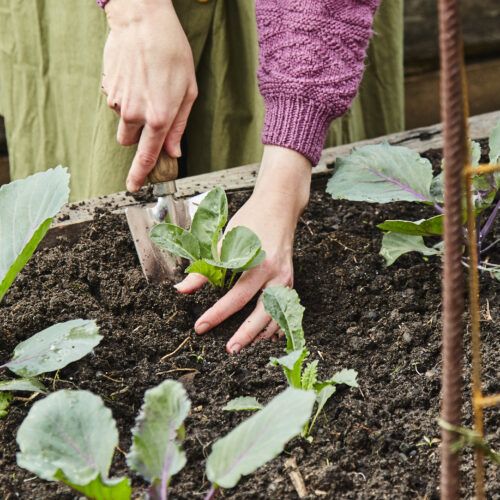Gardening jobs for May
2018-05-01T22:00:00+10:00
Justin Russell suggests two jobs to do this month to help your garden deal with a changing climate.
I’m baffled. The old rules, the ones I built my gardening practice around as a younger man, are being completely rewritten by climate change. Autumn was typically a wondrous time of the year in southern Queensland, but now the seasons are erratic and it’s a case of figuring out how to roll with the punches or cop the fist of climate change fair on the nose and end up sprawled out on the canvas. I can take a punch or two, but for the most part, I’d rather learn how to duck and weave.
One of the best ways to do this is by planting trees. Ignore the rhetoric that trees are messy, dangerous, footpath cracking monsters that want to take over the place. Well, maybe that last bit is true, but in Queensland at least we’re losing tree cover at frightening rates, partly in an ill-fated bid to open up the north to agriculture.
Shade has been more welcome than ever before during this long-lived summer, yet shade is at a premium, even in my garden, where I’ve prioritised sun. Not any more. It’s getting too damn hot and I’m on a drive to create more shade in my garden and beyond.
You should understand that there is a tree for every garden, and every garden can do with one more tree. Trees drop leaves, yes, but these are a precious resource for making compost. Some trees drop limbs and can fall over in storms. Avoid them, and make better selections. Focus especially on deciduous and rainforest trees in cooler and wetter areas, and very tough species in arid and hot areas.
Ideally choose varieties that have more than one purpose. For example, ash trees can have at least three purposes: useful timber for fires and building; climate modification; and plenty of leaves in autumn to make compost. Throw in elements such as a climbing frame for kids, a source of beauty and a screen from neighbouring houses and you have a very useful plant.
The second thing we can do to cope with climate change is continually improve soil. Good quality soil holds moisture for longer when it’s dry, and facilitates drainage when it’s wet. It provides the full range of nutrients plants need for strong growth and helps them resist pests. It produces nutrient-dense food that optimises human health. And best of all, it is one of the cheapest and most effective ways to both mitigate climate change, and adapt to it.
There is much conjecture about the best way to improve soil health. Some people advocate soil laboratory testing and remineralising to bring soil elements into balance. Others are fans of low or no-dig gardening and the continual addition of compost. I’m probably somewhere in the middle. I suggest moving your soil from whatever state it is in currently to one that contains reasonable levels of organic matter (and subsequent drainage/moisture holding capacity), that provides a suitable habitat for fungal and microbial life, and that grows healthy plants.
Try not to overcomplicate things by understanding that most Australian soils (especially in food-producing gardens) will benefit from regular small additions of compost/green manuring, the use of complete organic fertilisers, and the application of rock dust (for trace elements) and seaweed extract. If you want to get specific and razor accurate in your soil-building efforts, have your soil tested and apply the lab’s recommendations.
Climate change isn’t going away in a hurry. There is no silver bullet. Technology can only be part of the solution, and comes with it’s own set of ethical and regulatory issues. But something as low-key as gardening can make a difference, so get cracking this month on two tangibles – tree planting and soil building – and help create a liveable future.






